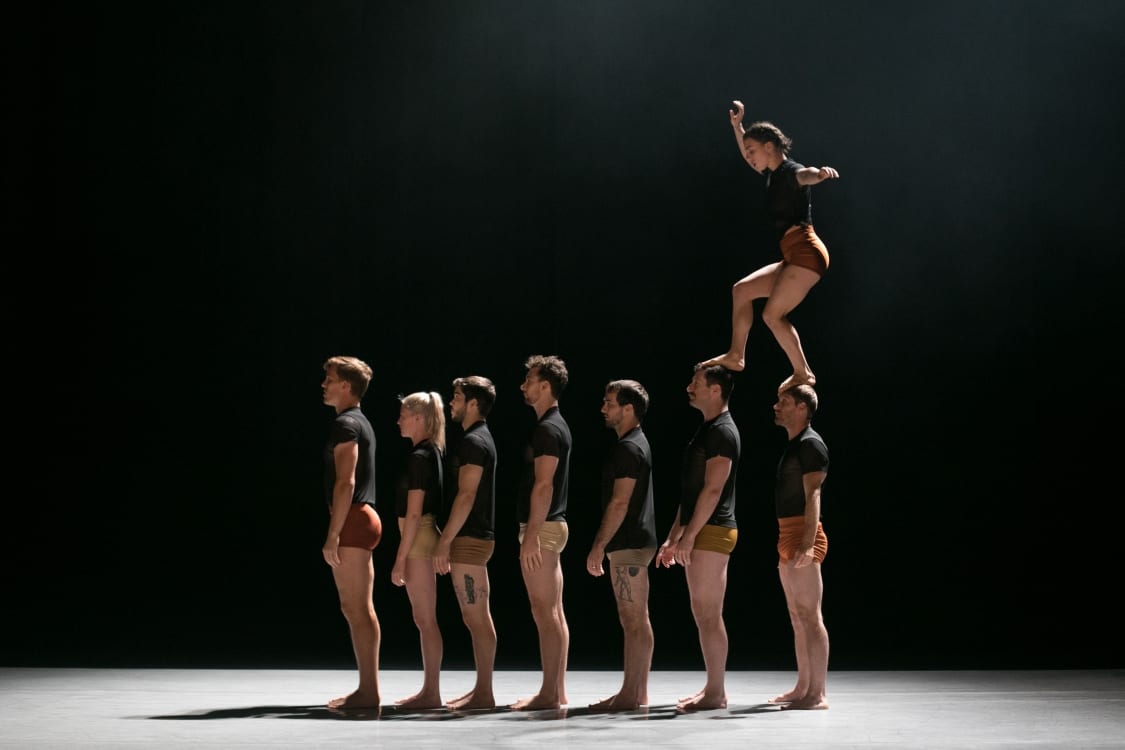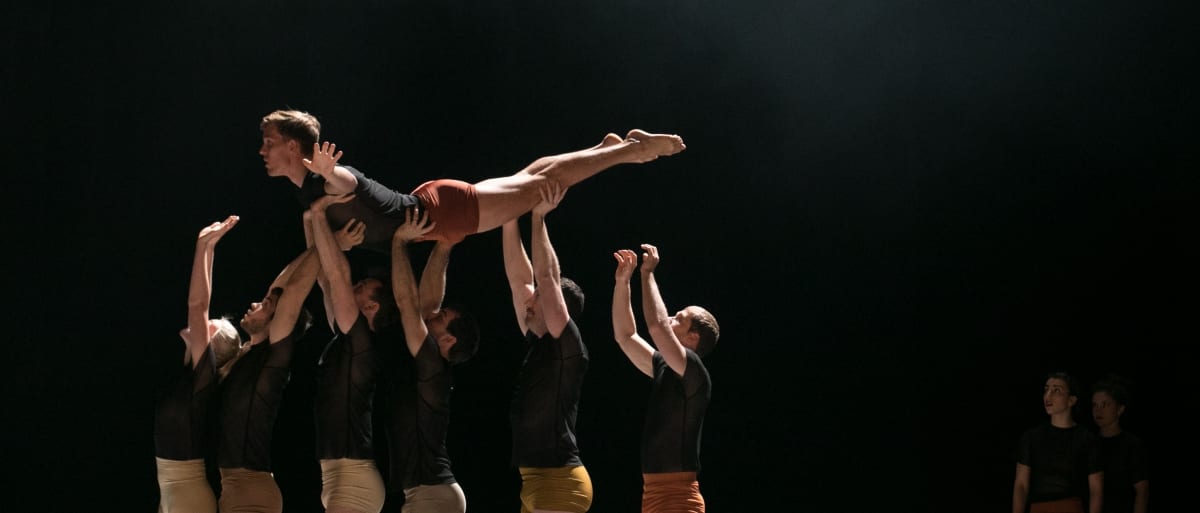“We humans are a fairly weak, unimpressive species. Anything we can achieve physically can be easily surpassed by a well-trained monkey.”
Australian circus troupe, Circa, sets the tone of the evening with this opening statement. An astounding feat of acrobatics, Humans explores what it means to be human through testing the frailty, vulnerabilities, power, daring, and humor of the body and our determination to push its boundaries.
Before the show even opens, Humans strips the body down. While the audience shuffles in, various performers enter the stage dressed in every day clothing before slowly stripping down to shorts and leotards, folding pants and stacking boots. New performers come on and re-dress in other’s clothing before stripping again. It is subtle and purposeful. Paired with the comparison to animals that opens the show, this removal of clothing suggests the removal of society’s trappings on humanity that move it beyond the physical body. When Adam and Eve were given knowledge, they clothed themselves, thus separating their bodies from animals. Here we have a nod to that distinction.

The show journeys through different stories, seeming to create a through line of the growth of a human from womb to playful childhoods to love and humor and all in between. A darkly lit early number contains the performers, echoing their claps and moments of silence. From there, we watch children at play, throwing themselves across the floor and manipulating their bodies and each other’s. To see the incorporation of other people being able to subtly yet profoundly move one’s body at will brings a dimension of community and interpersonal interactions to a story about the singular human body. One standout performance of self-manipulation is the “learning to walk” solo piece. In it, one female performer flops about the stage as she slowly learns balance and the art of standing. There is also the very relatable and hilarious licking of the elbow montage in which all of the performers try different ways to reach their elbow with their tongue. The humor that infiltrates the piece relies on our tendency to infuse movements and bodies with anthropomorphic intention. Henri Bergson argues that laughter is a strictly human phenomenon. Even when we are laughing at animals, we do so because we have found in their actions something human-like. It is telling that in a show comparing the human body to those of animals, what we laugh at in our movements is that which we associate with human realities. There is no language and yet we recognize the teasing of a flopping foot that won’t stay where the someone has placed it, the writhing hips of dorky love.
The whole performance is a phenomenon and exploration of the human body. The lighting, music, and costumes are all designed to emphasize the intentions behind the acrobat’s movements. The performers awe with astounding feats of strength and flexibility, but beyond that, they move us by showing the power of stillness. I have yet to see another acrobatic show that so appreciates how striking standing still can be, or how beautiful simply walking is. The combination of the two on stage, with all of the performers walking about, as subtle bursts of movement and tricks pepper the stage gives a nonchalance to the feats. It’s as if they are saying this is humanity, and wonders happen all around us, all the time, sometimes unnoticed. Humans represents the limitations of the human body while simultaneously showing us all it is capable of.

